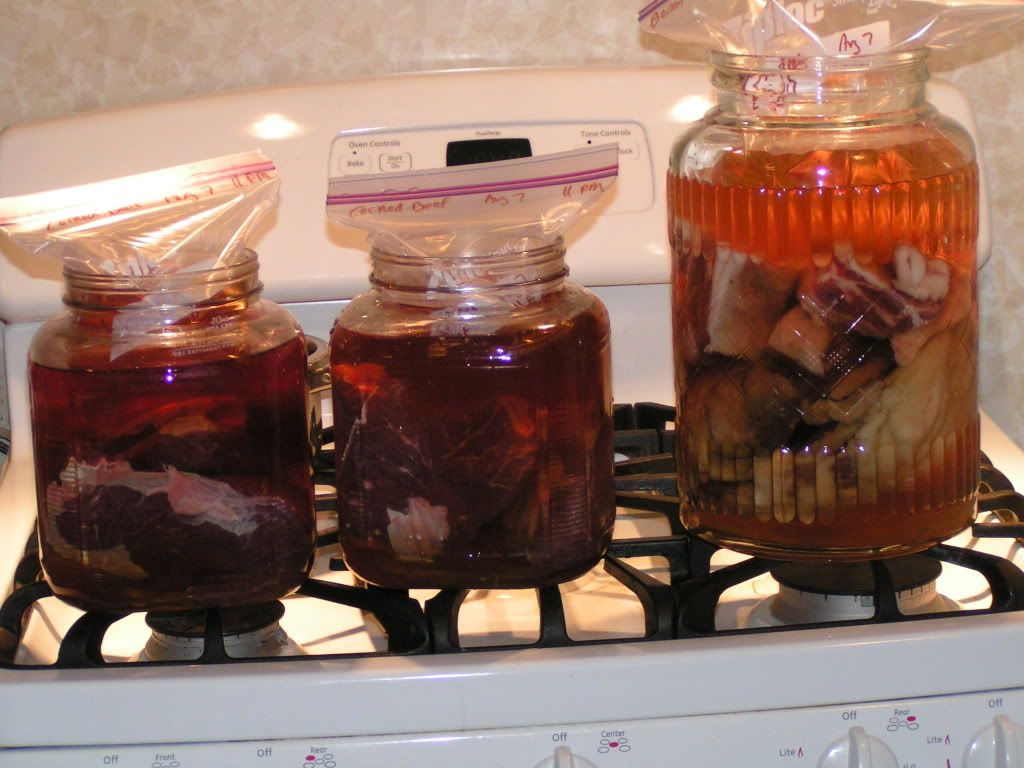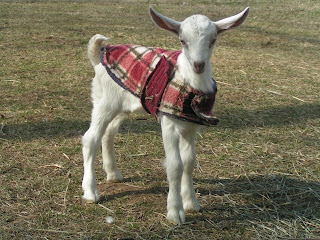This story will be told in reverse order. This is the first chance I've had to sit and write about it, I've been that out-straight-busy with the tasks of Pig Week. But what an amazing week it has been!
Everything is finally safely in the freezers, with the exception of the lard...rendering this crazy amount of lard is taking all week. But what a lovely task! With the possible exception of the bacon, lard is the most precious commodity of all our hog bounty.
The fat from pasture raised pigs, fed properly, has a perfect balance of saturated fats to monounsaturated fats....the same balance that is found in the cell walls in our bodies. It is also loaded with the very valuable fat soluble vitamins, particularly vitamin D. Although I'm a big believer in supplementation because the food supply most widely available in this country is grown on such depleted soil. Also, fast growing hybrid varieties don't have the time to take up the nutrients of the older, slower growing and more deeply rooted plants grown in past centuries. It is best to get your nutrients from your food whenever you can, but that is not always possible. Fat soluble vitamins are particularly difficult to find in supplement form, so pastured egg yolks and pig fat are particularly valuable.
If you can't raise pigs yourself, find a farmer who raises them on pasture and buy some fat to make your own lard.....it is so easy! The finest lard comes from a flat piece of visceral fat that lines the abdominal cavity. This fat is very saturated and makes the finest, flakiest, most tender pie crusts, cookies, and other pastries. I render this separately from the rest of the fat and mark it with the words "leaf lard." That piece of fat is called the leaf lard, and a butcher worth his salt will know exactly what you are asking for if you request to purchase it.
Fat from the rest of the pig can be used to make lovely lard as well. I save the belly fat, well marbled with meat, for bacon, and a bit of the forward end of the bacon is cut into chunks for salt pork. The rest of the fat, particularly that inch and a half layer of back fat, is cut into strips and ground up for rendering into the majority of the lard that we will get from our pigs.
Are you sitting down for this? Many people throw this fat away! Egads! So ask away, you will eventually find some and might find it for a pretty good price.
You can see the leaf lard in the upper right part of this side, above the ribs. On the left side of this hog you see a wide strip of fat along the back. This is what will become the bulk of my lard for the year.
We found a big hand grinder on clearance at TSC this fall and bolted it right to our butchering table (a homemade table found on the side of the road with a "free" sign on it! My favorite kind of equipment, after the stuff with "clearance" on the sign. It was made with folding banquet table legs, heavy scraps of plywood, and a hollow core door. Sturdy and storable, perfect for butchering, and much better than the scrap of siding and saw horses we'd been using.) As the fat was trimmed, it went straight into the grinder and the ground up fat went into a six gallon pail....after my 2.5 gallon Dutch oven was filled.
If you don't have access to a grinder (I have another one that attaches to my KitchenAid stand mixer that I use for small quantities of meat, as in making ground beef from a roast) you can use a sharp knife and cut the fat into the smallest dice you can manage.
There are several methods used in rendering lard. For smaller amounts, a crockpot works just fine. For serious amounts, my favorite is the cast iron Dutch oven. Filled with ground fat, it goes into the oven for several hours at 170-200 F. The lower temp is used if I have lots of other things to do before dealing with the melted fat, and the higher temp is used when I want to get several batches done in one day. I don't want it to boil and possibly leak out for fear of a grease fire. I don't overfill the pot and I keep the temp below boiling.
If you don't have a big crockpot or cast iron Dutch oven, you can use any large stock pot on top of the stove. For this method, you'll want to put some water (an inch or two, maybe) in the pot and put the fat in and bring it to a low simmer. Don't fill the pot so much that it could boil over! The water will prevent the fat from browning or possibly burning on the bottom, darkening and flavoring the lard. Neutral lard is the best for most uses in cooking, so you want to take care with this method.
You'll need to strain the rendered lard. I use a canning funnel, a fine mesh tea strainer (gauze or cheesecloth will do in a not-so-fine mesh strainer), and a metal measuring cup with handle to scoop the liquid lard out of the pot with. Lots of newspapers will keep the grease from taking over your kitchen, but dispose of them carefully....burning is the safest method.

I mark my canning lids with either "leaf lard," "lard," or "lard B" or "lard C." Leaf lard is from the leaf fat and is the finest. Just the word "Lard" indicates the best, purest lard that is scooped out of the pot from the oven and will cool to a pure white. "Lard B" is the fat that is scooped out after the fat goes back into the oven for more rendering and is a little darker. I will gather all the fat that has been rendered twice into one pot and render it one more time, even pressing it through a larger screen mesh colander to get the darker, lower quality of lard. This I use when the rest is gone, or to brown meats in, as the meaty flavor is fine for this application. It can also be used in making biscuits and pie crusts for pot pies, when a meaty flavor complements the quick breads served with a stew.
Lard B:
A few glass peanut butter jars are filled to give as gifts to some who helped with the harvest. If the jars are warmed first by placing them in the warm oven for a few minutes, and then filled with hot fat and the lids are sealed right away, the jars will seal and can be stored at room temperature. Any jars that don't seal go into the fridge to be used first.
Vitamin D performs many critical functions in our bodies. Did you know that you are much less likely to sunburn if your vitamin D levels are nice and high? Get some lard from pastured pigs into your diet.....you'll be amazed at the flavor and texture of the foods you make with it, too. I rarely tell guests that I've used lard in my cooking and it is always fascinating to me how they eat the foods like they are starving.....their bodies know what has been missing.



















































